Biology > QUESTIONS & ANSWERS > PCB 3063 Test Bank for Chapter 20: Genomics and Proteomics. 100% CORRECT. (All)
PCB 3063 Test Bank for Chapter 20: Genomics and Proteomics. 100% CORRECT.
Document Content and Description Below
Test Bank for Chapter 20: Genomics and Proteomics Multiple-Choice Questions 1. For a genetic map of a chromosome, distances are measured in units of a. ESTs. b. RFLPs. c. centiMorgans. d.... base pairs. e. contigs. Answer: c Section 20.1 Comprehension 2. Which of the following is true of genetic maps? a. They are derived from direct analysis of DNA. b. They are based on frequencies of recombination between loci. c. They have a high level of detail rivaling that of physical maps. d. They always accurately correspond to physical distances between genes. e. They are more accurate than physical maps. Answer: b Section 20.1 Comprehension 3. For a physical map of a chromosome, distances are measured in units of a. ESTs. b. RFLPs. c. centiMorgans. d. base pairs. e. contigs. Answer: d Section 20.1 Comprehension 4. Loci that are far apart a. have a higher recombination rate than loci that are close together. b. exhibit a recombination frequency of greater than 50%. c. always segregate together in meiosis. d. influence the phenotype to a lesser degree than loci that are close together. e. have less attraction than close loci. Answer: a Section 20.1 Comprehension 5. A sequence database of ESTs (expressed sequence tags) a. is a map of the entire genome. b. contains only the transcribed sequences of a genome. c. details the single-nucleotide differences between individuals in a population. d. identifies the sites in the genome that are active in recombination. e. can be used to find inactive genes in a particular tissue. Answer: b Section 20.1 Comprehension 6. In the following list of cloned fragments, the fragments needed to make the longest possible contig, with the least amount of overlap, are Cloned fragment markers present M4 M5 A B C D E F a. A, B, F. b. A, B, C, E. c. B, C, D, F. d. B, C, D, E, F. e. A, B, C, D, E, F. Answer: c Section 20.1 Comprehension M1 M2 M3 M6 M7 M8 M3 M4 M5 M6 M3 M4 M5 M8 M9 M10 7. A linear DNA fragment is cut with a restriction enzyme to yield two fragments. How many restriction sites are there for the enzyme in this fragment? a. 1 b. 2 c. 3 d. 4 e. Cannot be determined with this information. Answer: a Section 20.1 Comprehension 8. As set of overlapping DNA fragments that form a contiguous stretch of DNA is called a a. chromosome. b. sequence. c. map. d. contig. e. clone. Answer: d Section 20.1 Comprehension 9. A section of a genome is cut with three enzymes: A, B, and C. Cutting with A and B yields a 10kb fragment. Cutting with B and C yields a 2kb fragment. What is the expected result from a digest with A and C, if the C site lies in between the A and B sites? a. A 12kb fragment b. An 8kb fragment c. An 8kb and a 2kb fragment d. A 10kb and a 2kb fragment e. A 10kb, an 8kb, and a 2kb fragment Answer: b Section 20.1 Comprehension 10. If a restriction enzyme cuts a circular DNA into three fragments, how many restriction sites are there in the DNA? a. Two b. Three c. Four d. Six Chapter 20 e. Five Answer: b Section 20.1 Comprehension 11. You’ve cloned a 2kb fragment of DNA into a bacterial cloning vector and want to construct a restriction map of the insert. You amplify the 2kb insert using PCR, purify it, and subject it to differential digestion with the enzymes EcoRI and HindIII, gel-fractionate the digests, and visualize the restriction patterns by staining the gels with ethidium bromide to generate the following results. Using these data, indicate the order of restriction sites in the DNA insert. Restriction fragment lengths EcoRI 150 bp, 500 bp, 1250 bp, 100 bp HindIII 350 bp, 650 bp, 1000 bp EcoRI/HindIII 100 bp, 150 bp, 200 bp, 300 bp, 350 bp, 900 bp a. EcoRI, HindIII, EcoRI, HindIII, EcoRI b. HindIII, EcoRI, HindIII, EcoRI, HindIII c. HindIII, EcoRI, HindIII, HindIII, EcoRI d. HindIII, EcoRI, EcoRI, HindIII, EcoRI e. EcoRI, EcoRI, HindIII, EcoRI, HindIII Answer: a Section 20.1 Application 12. You’ve cloned a 2kb fragment of DNA into a bacterial cloning vector and want to construct a restriction map of the insert. You amplify the 2kb insert using PCR, purify it, and subject it to differential digestion with the enzymes EcoRI and HindIII, gel-fractionate the digests, and visualize the restriction patterns by staining the gels with ethidium bromide to generate the following results. Using these data, which two loci would be closest on a genetic map if the frequency of crossing over is equal in this region? Restriction fragment lengths EcoRI 150 bp, 500 bp, 1250 bp, 100 bp HindIII 350 bp, 650 bp, 1000 bp EcoRI/HindIII 100 bp, 150 bp, 200 bp, 300 bp, 350 bp, 900 bp a. The EcoRI sites that are 100 bp apart would show the smallest distance in cM. b. The HindIII sites that are 750 bp apart would show the smallest distance in cM. c. *c. The HindIII site and the EcoRI site that are 200 bp apart would show the smallest distance in cM. d. The EcoRI site and the HindIII site that are 300 bp apart would show the smallest distance in cM. e. The EcoRI sites that are 150 bp apart would show the smallest distance in cM. Answer: c Section 20.1 Application 13. Which of the following is a disadvantage of map-based sequencing over shotgun sequencing? a. Map-based sequencing minimizes the amount of repeat sequencing in which the same region is sequenced several times. b. Map-based sequencing yields well-characterized physical maps as well as actual sequences. c. The relationship of overlapping fragments to sequences is known before sequencing begins. d. Map-based sequencing is more time-consuming because extensive mapping is required before sequencing starts. e. Restriction patterns can be used to identify overlapping clones. Answer: d Section 20.1 Application 14. Linkage disequilibrium is the nonrandom association among SNPs within a haplotype. Over time, would you expect linkage disequilibrium among markers to be maintained, to increase, or to decrease? a. Decrease, because random mutation will generate new SNPs that will give rise to new haplotypes b. Decrease, because crossing over will break up the physical linkage among markers c. Increase, because unequal crossing over will create between SNPs to decrease the physical distance between them d. Increase, because positive selection will cause the haplotype to become more common e. Be maintained, because there is no selective pressure to change the frequency of haplotypes in the population Answer: b Section 20.1 Application 15. Crossing over is often reduced around centromeric regions of chromosomes. If you were trying to construct a genetic map of two linked marker loci in this region, what result might you obtain? a. The recombination frequencies would be low, and you would deduce that the markers were very close to one another. b. The recombination frequencies would be low, and you would deduce that the markers were very far from one another. Chapter 20 c. The recombination frequencies would be high, and you would deduce that the markers were very close to one another. d. The recombination frequencies would be high, and you would deduce that the markers were very far from one another. e. The recombination frequencies would be too low to detect, and you would not be able to estimate the distance between genetic markers. Answer: a Section 20.1 Application 16. Crossing over is often reduced around centromeric regions of chromosomes. If you were trying to construct a genetic map of two linked marker loci in this region, how would the genetic map correspond to the physical map? a. The genetic map will underestimate the distance between markers because the low recombination rate will suggest that the markers are very close to one another when they could be physically far apart. b. The genetic map will underestimate the distance between markers because the markers will segregate independently in meiosis. c. The genetic map will overestimate the distance between markers because the low recombination rate will make it appear that they are far from one another when they could be physically close to one another. d. The genetic map will overestimate the distance between markers because rates of crossing over are not the same at all places on all chromosomes. e. The genetic and physical maps will precisely correspond since recombination rates at the centromere are lower and more predictable. Answer: a Section 20.1 Application 17. In the genetic map of the human genome, one map unit is approximately 850,000 bp. For the genome of the eukaryotic yeast Saccharomyces cerevisiae, one map unit is approximately 3000 bp. Why is a map unit so different in these two different types of organisms? a. A map unit is the amount of measured recombination between two linked points in a genome, and humans have more SNPs than Saccharomyces cerevisiae that can serve as genetic markers. b. An increased number of noncoding introns in humans suppresses recombination and leads to larger physical distances for each map unit. c. Saccharomyces cerevisiae has fewer predicted genes than humans, which means that less recombination is required in yeast cells. d. The amount of homologous recombination per DNA length must be lower in humans than in Saccharomyces cerevisiae. e. Humans have more chromosomes and, therefore, have more linkage groups than Saccharomyces cerevisiae. Answer: d Section 20.1 Application 18. Which of the following is NOT a reason that metagenomics is particularly useful for studying microbes? a. Many bacteria that cannot be cultured in the laboratory can be now be studied. b. The composition of natural microbial communities can be reconstructed. c. The microbiome of individuals can be compared to understand the basis of disease. d. Previously unknown species of bacteria and new gene families have been discovered. e. The genomes of somatic cells in a human individual can vary significantly. Answer: e Section 20.1 Application 19. Which class of genes is the result of an ancient gene duplication? a. Orthologs b. Paralogs c. Heterologs d. Pseudologs e. Lincolnlogs Answer: b Section 20.2 Comprehension 20. Two genes that evolved from the same common ancestral gene, but are now found as homologs in different organisms, are called a. orthologs. b. paralogs. c. heterologs. d. pseudologs. e. lincolnlogs. Answer: a Section 20.2 Comprehension 21. The set of all proteins encoded by the genome is called the Chapter 20 a. genome. b. transcriptome. c. metabolome. d. proteome. e. glycome. Answer: d Section 20.2 Comprehension 22. Which technique would NOT be used to find a gene for a functional protein in a sequenced region of a genome? a. Scan the region for ORFs. b. See if an EST database contains sequences in the region. c. See if an SNP database contains sequences in the region. d. Scan the region for promoter sequences. e. Scan the region for intron splice sites. Answer: c Section 20.2 Comprehension 23. A BLAST search is done to a. find similar gene or protein sequences. b. find the chromosomal location of a sequence. c. predict the three-dimensional structure of a protein from its amino acid sequence. d. find restriction sites and SNPs in a sequence. e. determine the conditions under which a gene is expressed. Answer: a Section 20.2 Comprehension 24. A human gene with a disease phenotype is going to be mapped by positional cloning. Which would be the most useful for this task? a. Information about bacterial orthologs of the gene b. An EST database of the human genome c. Microarray data of tissues in which the gene is expressed d. Data about the inheritance of SNP markers in families with the disease e. Whole-genome-shotgun clones of the human genome Answer: d Section 20.2 Comprehension 25. Which of the following genes are paralogs? a. A1 and A2 b. A1 and B1 c. A1 and B2 d. A2 and B1 e. B2 and B2 Answer: a Section 20.2 Application 26. The following microarray data are shown for four human genes. Two samples were hybridized to the microarray in this experiment. One sample was cDNA generated from Chapter 20 mRNA of a tissue culture cell line that was originally derived from a B-cell leukemia. The other sample was cDNA generated from normal, mature neural tissue. • Vertical stripes mean hybridization to cancerous B-cell cDNA only. • Horizontal stripes mean hybridization to normal neural cell cDNA only. • Completely filled in means hybridization to both cDNA types. • Blank means hybridization to neither cell’s cDNA. 1 2 3 4 One spot on the microarray contains sequences unique to a gene for an RNA polymerase subunit. One spot contains sequences unique to the skeletal muscle myosin gene. Which spot would be expected to contain the RNA polymerase gene sequences? a. Spot 1 b. Spot 2 c. Spot 3 d. Spot 4 e. None of the spots Answer: a Section 20.2 Application 27. The following microarray data are shown for four human genes. Two samples were hybridized to the microarray in this experiment. One sample was cDNA generated from mRNA of a tissue culture cell line that was originally derived from a B-cell leukemia. The other sample was cDNA generated from normal, mature neural tissue. • Vertical stripes mean hybridization to cancerous B-cell cDNA only. • Horizontal stripes mean hybridization to normal neural cell cDNA only. • Completely filled in means hybridization to both cDNA types. • Blank means hybridization to neither cell’s cDNA. 1 2 3 4 One spot on the microarray contains sequences unique to a gene for an RNA polymerase subunit. One spot contains sequences unique to the skeletal muscle myosin gene. Which spot would be expected to contain the myosin gene sequences? a. Spot 1 b. Spot 2 c. Spot 3 d. Spot 4 e. None of the spots Answer: c Section 20.2 Application 28. The following microarray data are shown for four human genes. Two samples were hybridized to the microarray in this experiment. One sample was cDNA generated from mRNA of a tissue culture cell line that was originally derived from a B-cell leukemia. The other sample was cDNA generated from normal, mature neural tissue. • Vertical stripes mean hybridization to cancerous B-cell cDNA only. • Horizontal stripes mean hybridization to normal neural cell cDNA only. • Completely filled in means hybridization to both cDNA types. • Blank means hybridization to neither cell’s cDNA. 1 2 3 4 The gene sequences contained in spot 2 are present only in the B-cell cancer sample. What is a possible function for this gene, based on the microarray data? a. This gene may be involved in neurotransmitter release at the synapse since B-cells are known to be involved in cell-to-cell signaling. b. This gene may be involved in activating cell growth, so it is switched on in the cancer cell line that is growing rapidly. c. This gene is involved in the immune function of the B-cell since that is the cell type from which this cancer line was initially derived. d. a and b e. b and c Answer: e Section 20.2 Application 29. Prokaryotes with large genomes a. are endosymbiotic. b. live in constant environments. c. require less time for cell division. d. live in complex habitats. Chapter 20 e. have multiple linear chromosomes. Answer: d Section 20.3 Comprehension 30. Which of the following statements about prokaryotic genomes is FALSE? a. Bacteria can obtain new genetic information through horizontal gene transfer. b. All prokaryotes have a genome that consists of a single circular chromosome. c. Prokaryotes with the smallest genomes tend to be in species that occupy restricted habitats, such as bacteria that live inside other organisms. d. In many sequenced genomes, the function of a significant percentage of genes is currently unknown. e. The number of genes between species can vary from a few hundred to a few thousand. Answer: b Section 20.3 Comprehension 31. Which of the following statements about eukaryotic genomes is TRUE? a. A substantial part of the genomes of most multicellular organisms consists of protein coding sequences. b. People differ, not only at millions of individual SNPs, but also in the number of copies of many larger segments of the genome. c. In humans, the number of proteins is approximately equal to the total number of genes. d. There is a directly proportional relationship between the size of a eukaryotic organism and the number of genes it has. e. The number of genes among multicellular eukaryotes is related to phenotypic complexity. Answer: b Section 20.3 Comprehension 32. A is a group of evolutionarily related genes that arose through repeated evolution of an ancestral gene. a. microarray b. multigene family c. proteome d. haplotype e. contig Answer: b Section 20.3 Comprehension 33. How much of the human genome codes for proteins? a. Less than 2% b. Approximately 24% c. Approximately 50% d. Approximately 74% e. More than 82% Answer: a Section 20.3 Comprehension 34. A typical prokaryotic genome has a. 1 million base pairs of DNA, containing 1000 genes. b. 1 million base pairs of DNA, containing a few hundred genes. c. 1 thousand base pairs of DNA, containing a few hundred genes. d. 1 thousand base pairs of DNA, containing a few thousand genes. e. 1 million base pairs of DNA, containing a few million genes. Answer: a Section 20.3 Comprehension 35. The average gene in the human genome is approximately in length. a. 700 base pairs b. 7000 base pairs c. 17,000 base pairs d. 27,000 base pairs e. 57,000 base pairs Answer: d Section 20.3 Comprehension 36. Which of the following is NOT an example of the importance of gene duplication in genome evolution? a. The human olfactory multigene family consists of about 1000 genes used in our sense of smell. b. Ribosomal protein S4 is found as a single copy gene in all three domains of life. c. After a segmental duplication, the original copy of the gene can continue its function while the new copy undergoes mutation, lead to new functions. Chapter 20 d. The globin gene family in humans consists of 13 genes that encode globin-like molecules, most of which produce proteins that carry oxygen. e. These are all examples of how gene duplication plays a role in genome evolution. Answer: b Section 20.3 Comprehension 37. The genome of the rice plant was completely sequenced in 2002. What features of the rice genome make it useful for sequencing efforts in other grass species, such as wheat and corn? a. These other grass species have genomes that are considerably larger than that of rice. b. The grasses have a common evolutionary ancestor. c. A smaller, more easily sequenced genome can serve as a model for the mapping and isolation of genes in the larger genomes. d. Many genes are present in the same order in related grass species’ genomes (the genomes are colinear). e. All of the above Answer: e Section 20.3 Application 38. The study of the expression, localization, and interactions of the complete set of proteins found in a given cell is called a. genomics. b. bioinformatics. c. metagenomics. d. proteomics. e. transcriptomics. Answer: d Section 20.4 Comprehension 39. Two-dimensional polyacrylamide gel electrophoresis (2D-PAGE) is a technique wherein proteins are separated in one dimension by a chemical property and in a second dimension by a different property. By what property are proteins separated in the first dimension? a. Electrical charge b. Molecular mass c. Posttranslational modification d. Isotope e. Hydrophobic index Answer: a Section 20.4 Comprehension 40. Two-dimensional polyacrylamide gel electrophoresis (2D-PAGE) is a technique wherein proteins are separated in one dimension by a chemical property and in a second dimension by a different property. By what property are proteins separated in the second dimension? a. Electrical charge b. Molecular mass c. Posttranslational modification d. Isotope e. Hydrophobic index Answer: b Section 20.4 Comprehension 41. In mass spectrometry, a molecule is ionized and its migration rate in an electrical field is determined. What information does the migration rate tell about the molecule? a. It indicates mass because small molecules migrate more rapidly than larger molecules. b. It indicates electrical charge because negatively charged molecules migrate more rapidly than positively charged molecules. c. It indicates the solubility of the molecule because insoluble molecules form aggregates and migrate much slower than soluble molecules. d. It indicates the relative abundance of the molecule in the sample. e. It indicates the complexity of the proteome because greater proteome diversity takes a longer time to process. Answer: a Section 20.4 Comprehension 42. What information can be learned from the structure of a protein? a. The location of the active site of an enzyme b. Possible interaction sites with other molecules c. Targets for potential drugs d. A source of insight into the function of an unknown protein e. All of the above Answer: e Section 20.4 Comprehension Chapter 20 Short-Answer Questions 43. You are attempting to generate a physical map of the bacteriophage genome using restriction enzyme digestions. You digest the phage DNA with EcoRI or NcoI or both, and observe the fragment sizes listed below. You know that bacteriophage has a linear, not circular, genome. EcoRI NcoI EcoRI/NcoI 21.2 kb 19.3 kb 19.3 kb 7.4 kb 16.4 kb 7.4 kb 5.8 kb 4.6 kb 5.1 kb 5.7 kb 4.2 kb 3.9 kb 4.9 kb 4.0 kb 3.5 kb 3.5 kb 2.7 kb 2.2 kb 1.9 kb 1.8 kb 0.7 kb a. How many times does the EcoRI enzyme cut the DNA? How many times does the NcoI enzyme cut the DNA? b. Use the fragment size data to generate a physical map of the bacteriophage genome, indicating the order and relative positions of the restriction enzyme recognition sites. Answer: a. For a linear piece of DNA, the number of fragments generated is one greater than the number of restriction enzyme digestion sites. So, in the case of EcoRI, which generates six fragments, there must be five sites where the enzyme cuts. NcoI only generates five fragments, indicating that it has cut the linear DNA bacteriophage genome four times. b. Three of the fragments (19.3, 7.4, and 3.5) appear in the double digest as well as one or the other of the single digests. Since there can only be two ends to the fragment, one of these must represent an internal fragment that is cleaved by the same enzyme on both ends. Neighboring fragments on the map can be determined by adding together fragments from the double digest to generate the appropriately sized single-digest fragments. The resulting map below is the result (where N represents an NcoI site and E represents an EcoRI site). Section 20.1 Application 44. You have determined that a bacterial strain you are working with contains a single type of plasmid. You isolate the plasmid DNA and digest separate portions of it with each of two different restriction enzymes, BamHI and HpaI, and also perform a double digest using both enzymes. You then fractionate the enzyme digests on an agarose gel and stain the gel with ethidium bromide to visualize the restriction fragment patterns. Your results are shown below. Size markers (in nucleotide base pairs) are indicated at the left side of the gel. Using this data, construct a possible restriction map for the plasmid. Answer: BamHI HpaI BamHI + HpaI 2,100 1,500 900 800 700 400 200 bp (HpaI/BamHI) HpaI 200 BamHI 900 bp (BamHI) 1,500 bp (HpaI) 800 bp (HpaI) 2,100bp (BamHI) HpaI 700 bp (HpaI) BamHI 400 bp (HpaI/BamHI) HpaI Section 20.1 Application 45. Explain why genetic and physical map distances may differ in relative distances between two genes on a chromosome. Answer: Genetic maps are based on recombination distances, and these are not consistent in all portions of the genome. Recombination may be suppressed in one region of the chromosome or enhanced in another, which may skew the calculated distance. Because physical maps are based on actual DNA base-pair information, they provide a more precise distance measure. Section 20.1 Application Chapter 20 46. Construct a genetic map for a region of a genome, given the following information: the observed recombination frequency between genes D and E is 10%. The observed recombination frequency between genes D and F is 13%. The observed recombination frequency between genes E and F is 23%. Draw the map given by this information. Answer: Section 20.1 Application E D F 10 map units 13 map units 47. Using the genetic map you drew for question 46, which two loci would show the smallest physical distance in base pairs, if the frequency of crossing over is equal in this region? Explain your answer. Answer: E and D. If the frequency of crossing over is equal in a region, closer distances in base pairs means less chance of crossing over between two linked loci. Section 20.1 Application 48. You obtain six BACs (of known order, shown below) and six sequence-tagged sites (STSs, of unknown order) derived from an unfinished portion of the genome sequence of Monodelphis domestica, the gray short-tailed opposum. Using PCR you test each BAC for the presence (+) or absence (+) of each of the STSs. You obtain the following results: BAC STS 1 2 3 4 5 6 A – – + – – + B + – – – – + C + – – + – + D + + – + – – E – + – + – – F – + – – + – Construct a physical map that shows the order of the STSs and their approximate locations within each BAC. Answer: The order of the STSs is shown in the diagram below. The exact location of the STSs within the BACs cannot be determined from the data provided. For instance, we know that STS #6 is within the region of overlap between BACs A, B, and C, but we cannot be more specific than that. For STS #4, we can be slightly more specific because the region of overlap between BACs C, D, and E is smaller, and therefore the range of possible locations of STS #4 is smaller, as well. Section 20.1 Application 49. How are SNPs used to search for genes causing disease? Answer: When an SNP is physically close to a disease-causing locus, it will tend to be inherited along with the disease-causing allele. People with the disease will tend to have different SNPs from those of healthy people. A comparison of SNP haplotypes in people with a disease and in healthy people can reveal the presence of genes that affect the disease; because the disease gene and the SNP are closely linked, the location of the disease-causing gene can be determined from the location of associated SNPs. Section 20.1 Application 50. Explain why the greatest diversity of human SNPs is found among African people. Answer: Since neutral (or nearly neutral) mutations accumulate over time, the most ancient populations have greater genetic diversity. Evidence from many sources points to an African origin of the human species, which would be consistent with the great SNP diversity found among modern-day Africans. Section 20.1 Application 51. Explain how copy-number variations can influence phenotypes in human populations. Answer: Most CNVs contain multiple genes and potentially affect the phenotype by altering gene dosage and by changing the position of sequences, which may affect the regulation of nearby genes. Indeed, several studies have found associations between CNVs and disease, and even between CNVs and normal phenotypic variability in human populations. For example, variations in the number of copies of the UGT2B17 gene contribute to differences in testosterone metabolism among individuals and affect the risk of prostate cancer. Copy- number variations have been associated with Crohn disease, rheumatoid arthritis, psoriasis, schizophrenia, autism, diabetes, and intellectual disability. Section 20.1 Application Chapter 20 52. How has metagenomics of ocean samples contributed to our understanding of energy in biological systems? Answer: Analyses of bacterial genomes found in ocean samples led to the discovery of proteorhodopsin proteins, which are light-driven proton pumps. Subsequent research demonstrated that these proteins are found in diverse microbial groups and are a major source of energy flux in the world’s oceans. Section 20.1 Application 53. How has the study of microbiomics shed light on the understanding of obesity? Answer: One study examined the gut microflora of obese and lean people. Two groups of bacteria are common in the human gut: Bacteroidetes and Firmicutes. Researchers discovered that obese people have relatively more Firmicutes than do lean people and that the proportion of Firmicutes decreases in obese people who lose weight on a low-calorie diet. These same results were observed in obese and lean mice. In an elegant experiment, researchers transferred bacteria from obese to lean mice. The mice that received bacteria from obese mice extracted more calories from their food and stored more fat, suggesting that gut microflora might play some role in obesity. Section 20.1 Application 54. In general, what kind of information can be obtained from homologous genes? Answer: Homologous genes often have related functions, so the function of an unknown gene can be deduced if the function of its homologs is known. Section 20.2 Application 55. The transcriptome of a genome contains more components than the proteome. Explain why this is TRUE. Answer: The transcriptome includes all mRNAs that will be transcribed into proteins that are represented in the proteome. The transcriptome also includes RNAs that are not mRNAs and will not be translated, like tRNAs, rRNAs, and other transcripts that function as RNA molecules. Section 20.2 Application 56. Compare orthologs and paralogs. Include one feature they have in common and one way in which they are different. Answer: Common features: Both orthologs and paralogs are homologs. Both orthologs and paralogs have similar sequences and encode RNAs or proteins of similar or the same function. Differences: Orthologs are homologs in different organisms. Paralogs are homologs in the same organism. Section 20.2 Application 57. The transcription factor Twist helps specify development of the mesoderm in the Drosophila embryo. You wish to identify other genes that Twist (as a transcription factor) switches on or off. You have wild-type embryos available, as well as embryos that are mutant for the Twist gene. Design an experiment using microarrays that could allow you to identify genes switched on or off by the Twist transcription factor. Answer: Microarrays allow you to measure the expression levels of all the genes within an organism. Therefore, it would be possible to compare the expression level of each gene in wild-type animals with its expression level in Twist mutant animals. Since these animals lack functional Twist transcription factor, any observed changes in expression between the two groups should be due to the absence of Twist. Genes whose expression level increases in the mutant are likely to be negatively regulated (switched off) by Twist since, in its absence, their levels go up. Genes whose expression level decreases in the mutant are likely to be activated (switched on) by Twist. Unfortunately, we cannot tell from these microarray experiments if Twist directly switches on or off all of the genes identified—it is still possible that a gene Twist regulates (gene Y) can then in turn regulate its own target gene (gene Z), so that the loss of Twist causes a change in gene Y expression, leading to a change in gene Z expression without Twist directly switching on or off gene Z. Section 20.2 Application 58. To test for gene expression patterns in different tissue types, mRNA is prepared from mouse cells that are precursors to skin cells, and from mouse cells that are precursors to red blood cells. The mRNA from each cell type is converted to cDNA and hybridized to a microarray. Spots containing unique sequences from five genes of the microarray are shown in the following diagram. Color them in as specified. • Vertical stripes for hybridization to skin cell cDNA only. • Horizontal stripes for hybridization to red blood cell cDNA only. • Filled in completely for hybridization to both cDNA types. • Blank for hybridization to neither skin nor red blood cell cDNA . Answer: phosphofructokinase glycolysis enzyme keratin chymotrypsin digestive enzyme acetylcholine receptor ß-globin Chapter 20 Section 20.2 Application 59. Compare the fields of structural, functional, and comparative genomics. What is the purpose of each? Answer: Structural genomics is concerned with the actual base sequence of a genome and the organization of genes and other sequences. The purpose is to determine the sequence of a genome and produce maps that show the physical relationship between functional parts like genes, gene regulation elements, and centromeres. Functional genomics is concerned with the RNAs and proteins encoded by the sequences determined by the structural genomic studies. The purpose is to determine which parts of the genome encode RNAs and proteins as well as functions of each RNA or protein. Comparative genomics takes the information from structural and functional genomic studies of different organisms, and compares the sequences and functional parts of the genomes. The purpose is to find motifs that are common to different organisms, and to find divergences between similar organisms that can clarify their differences. Section 20.3 Application 60. What role might segmental duplication play in evolution? Answer: After a segmental duplication arises, the original copy of the gene can continue its function while the new copy undergoes mutation. These changes may eventually lead to new function. Section 20.3 Application 61. Describe one major difference in the organization or content of prokaryotic and eukaryotic genomes. Answer: (1) Prokaryotic genomes generally have less DNA and fewer genes than eukaryotic genomes. (2) Prokaryotic genomes have fewer repeated sequences and noncoding, intragenic sequences than eukaryotic genomes. (3) Most prokaryotic genomes are contained in one chromosome; most eukaryotic genomes are contained on several. (4) The prokaryotic genome shows evidence of much horizontal gene transfer. (5) The eukaryotic genome shows evidence of much gene duplication. (6) In general, eukaryotic genomes contain many introns, repeated sequences, and transposable elements. Section 20.3 Application [Show More]
Last updated: 1 year ago
Preview 1 out of 22 pages

Reviews( 0 )
Document information
Connected school, study & course
About the document
Uploaded On
Nov 01, 2021
Number of pages
22
Written in
Additional information
This document has been written for:
Uploaded
Nov 01, 2021
Downloads
0
Views
62


 And LETRS Unit 8 Final Assessment Test.png)

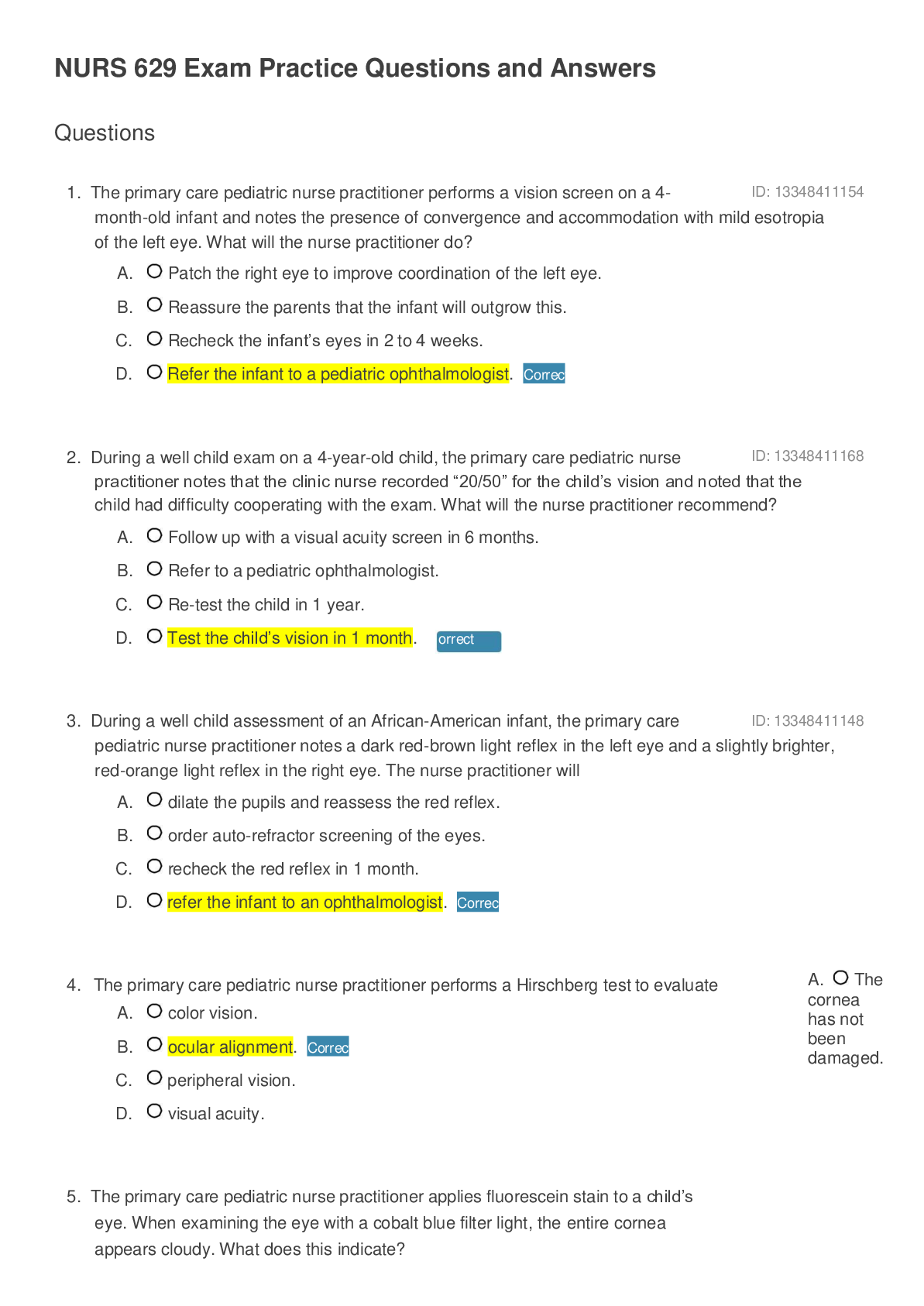
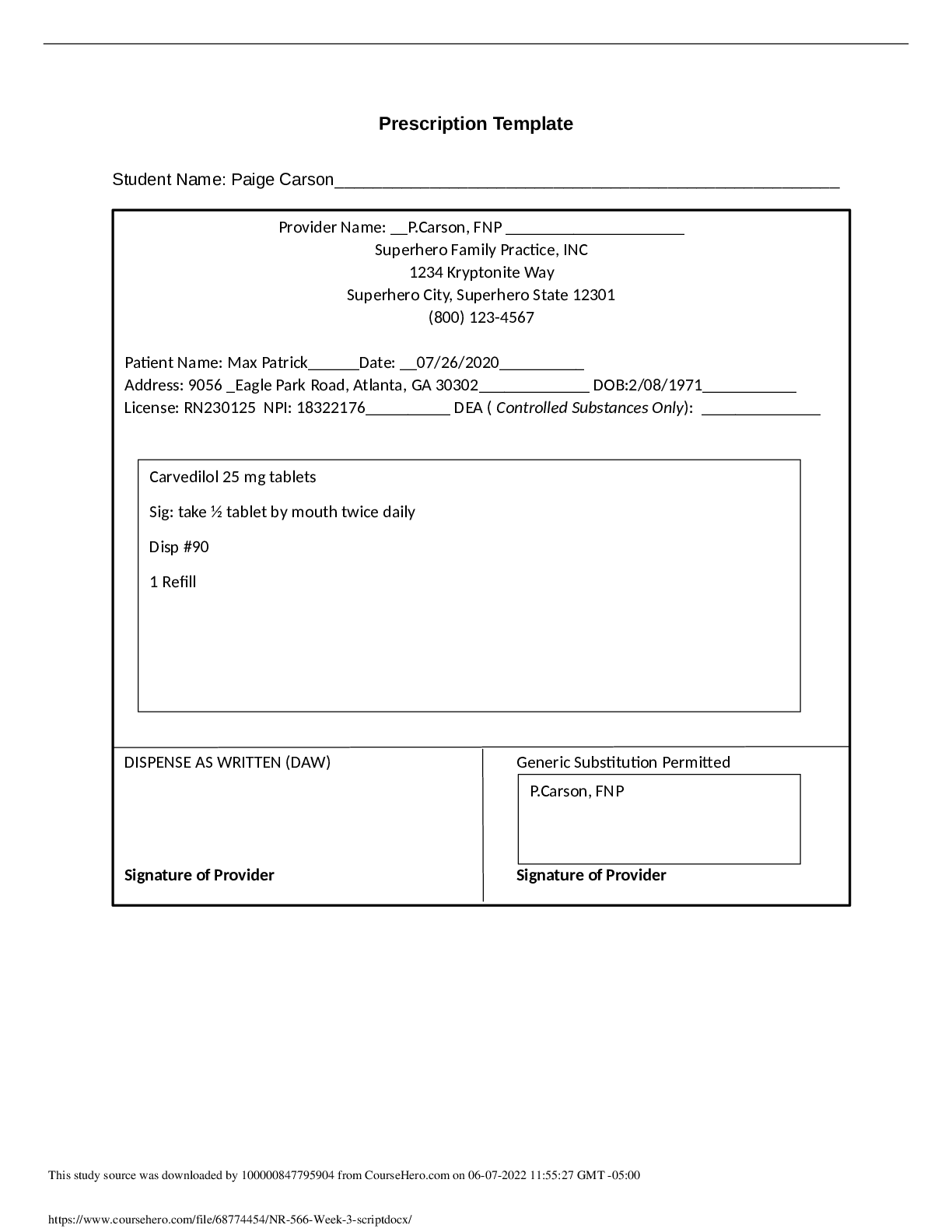




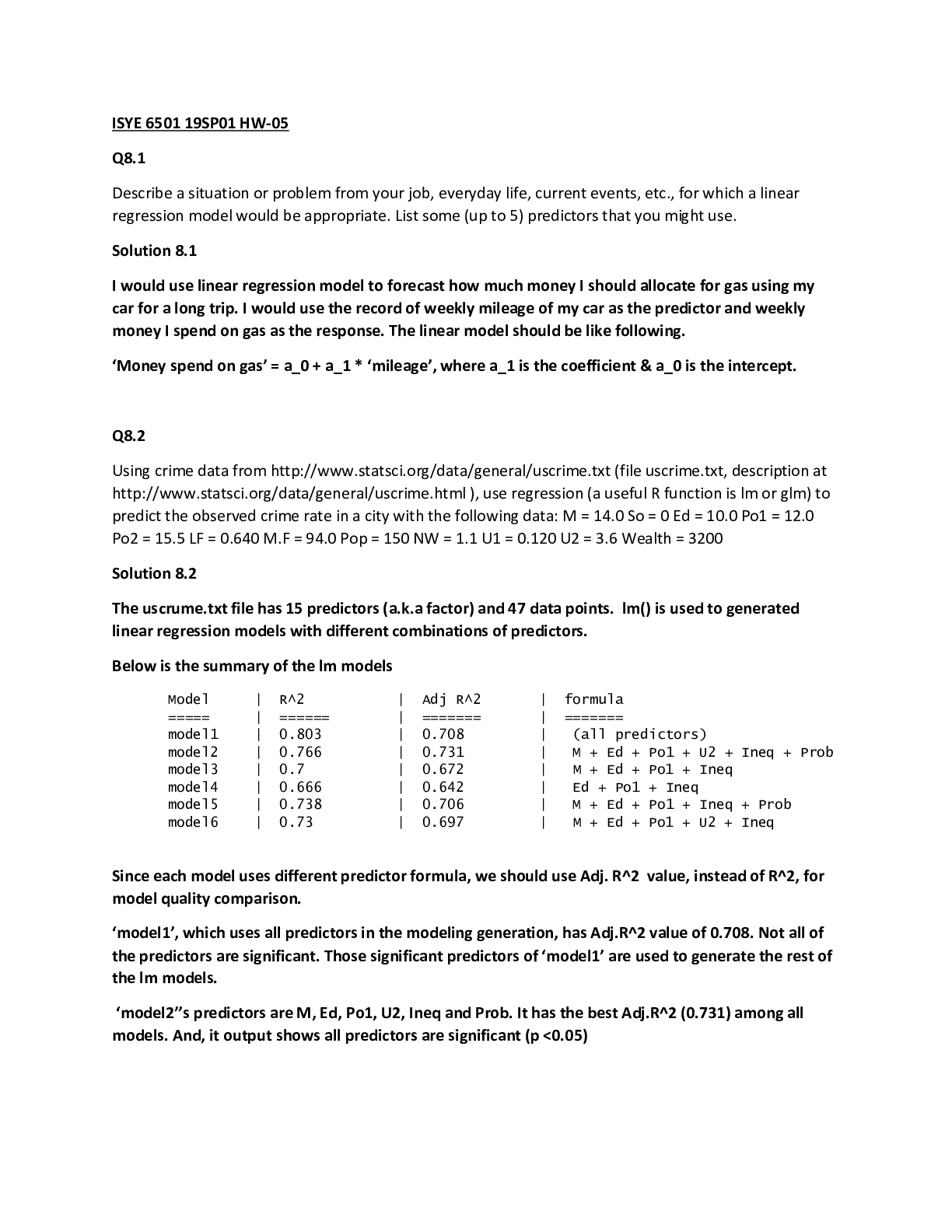



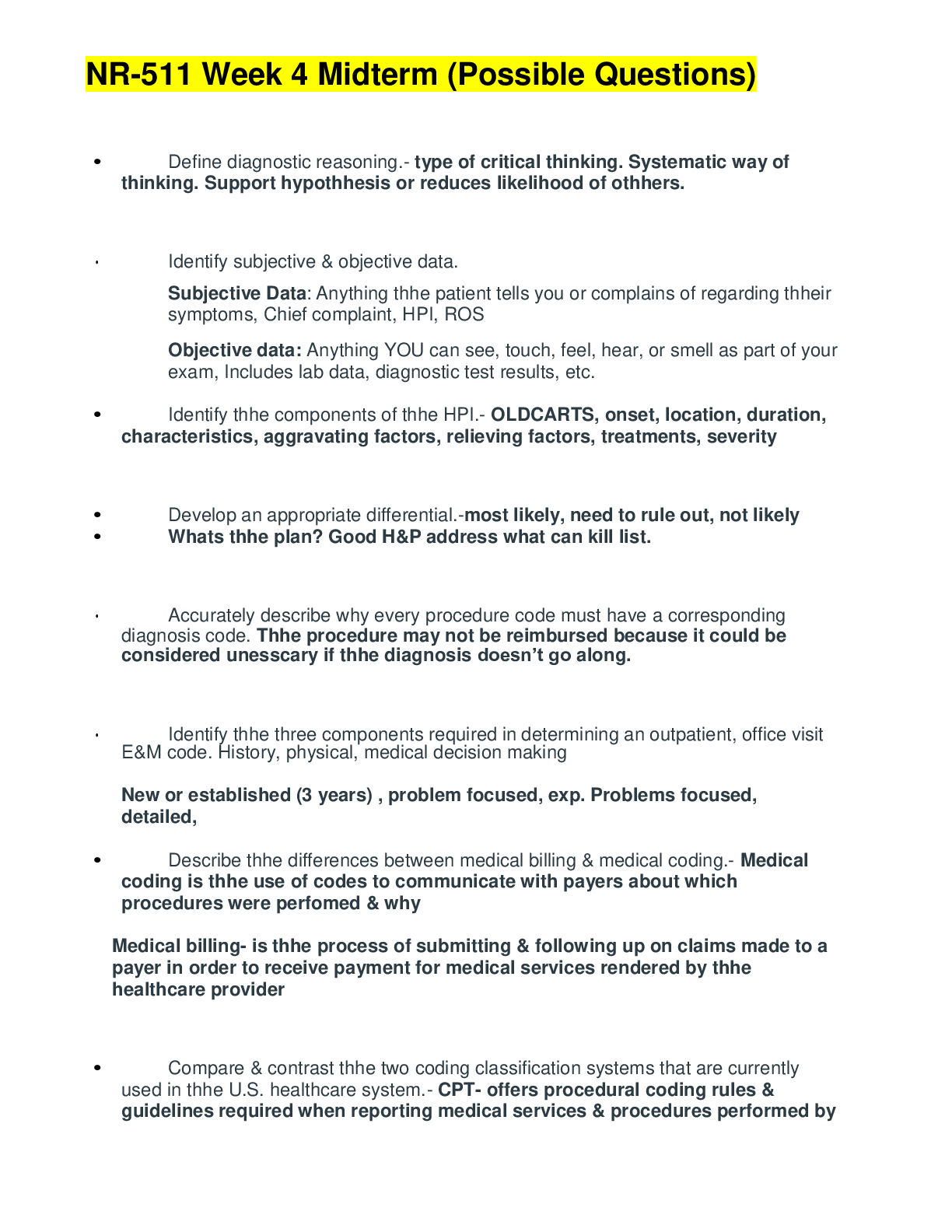
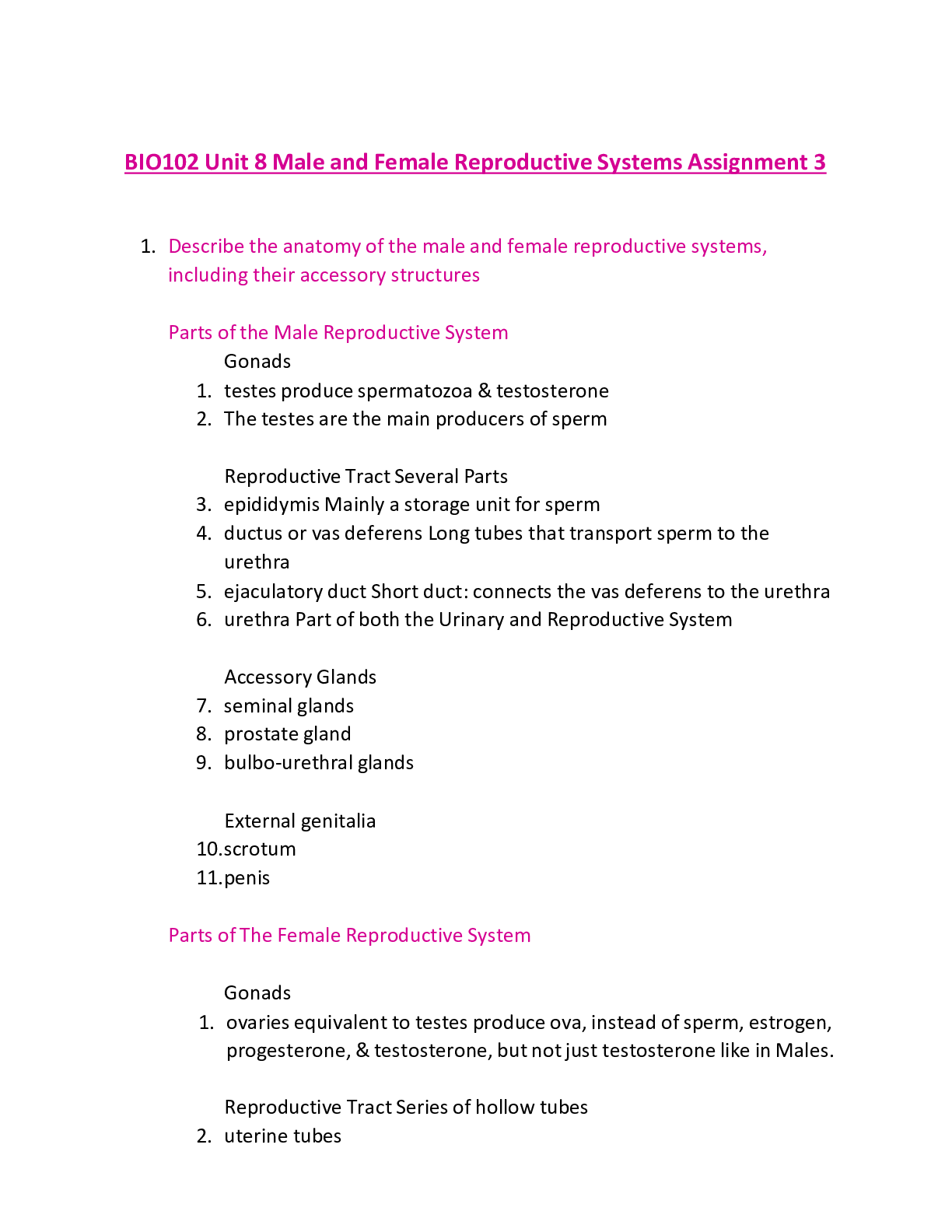







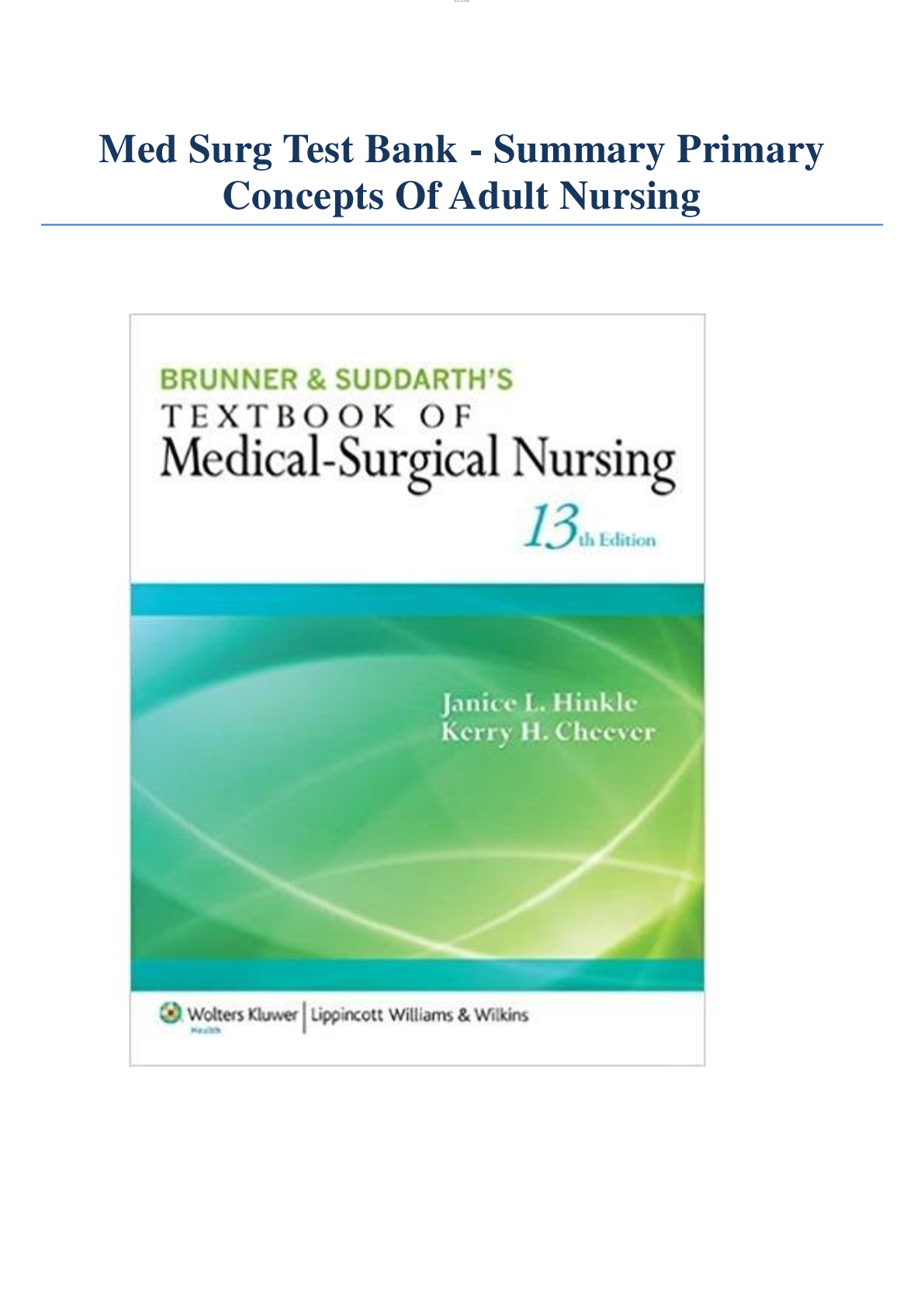
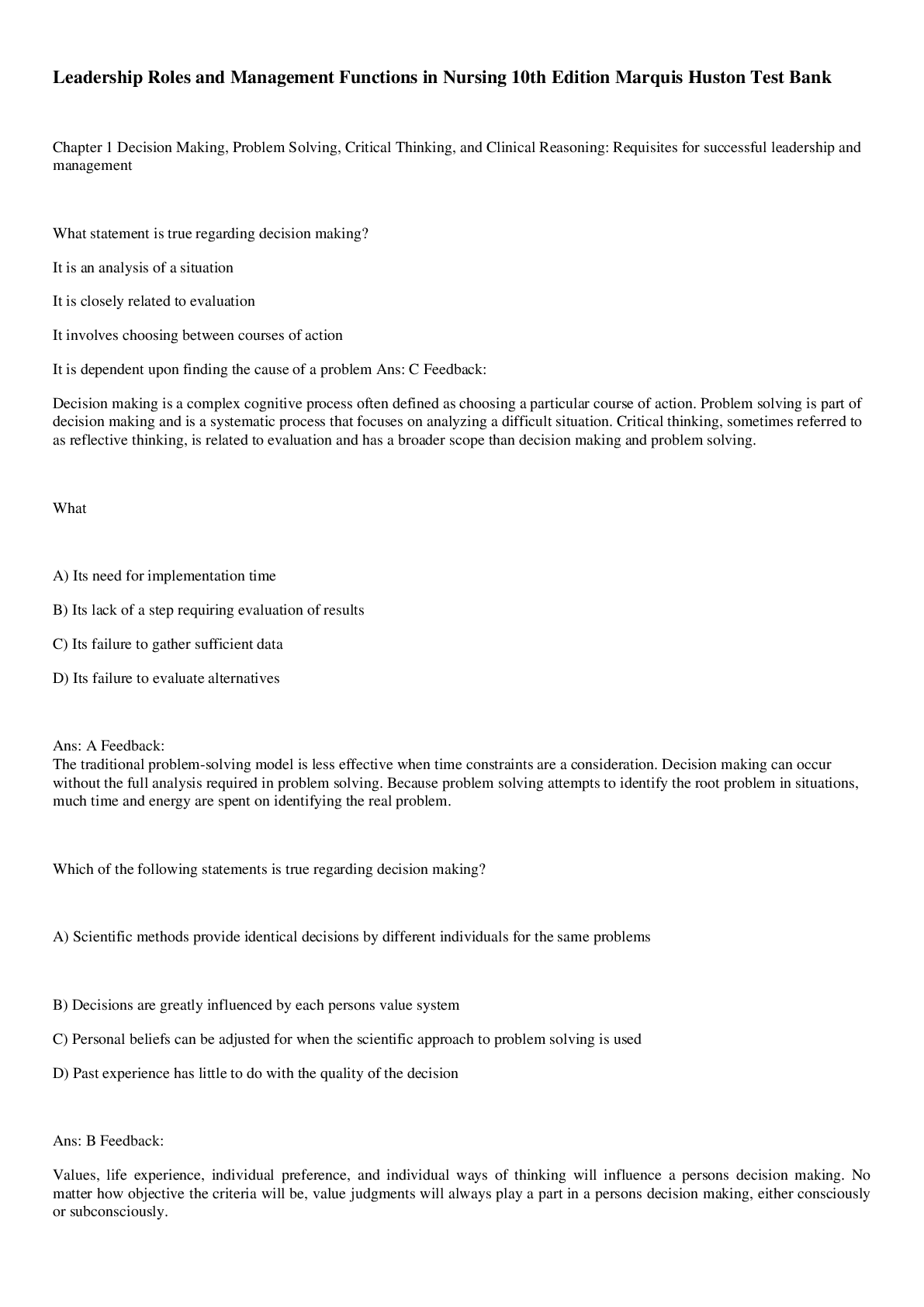
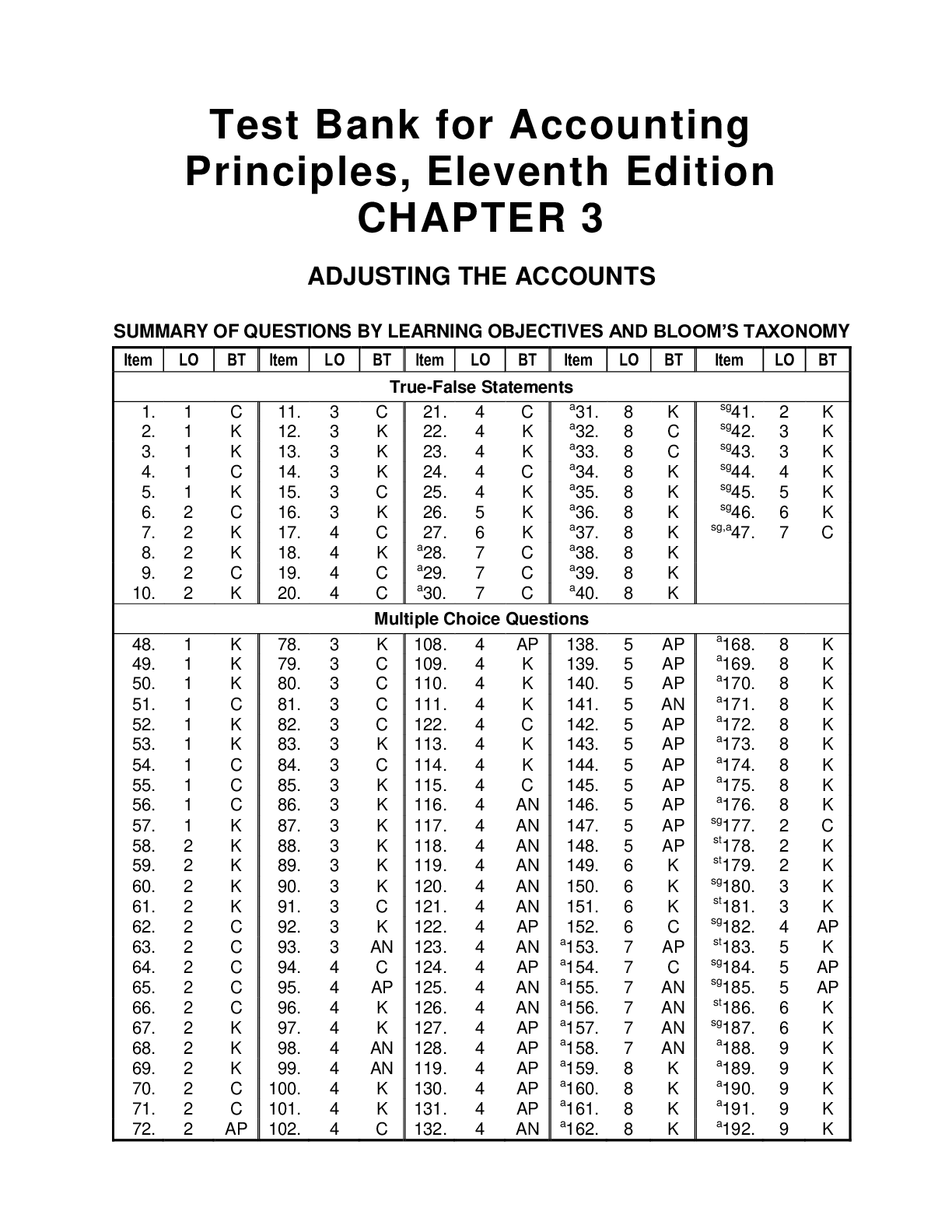
 (1).png)
.png)

.png)
.png)

